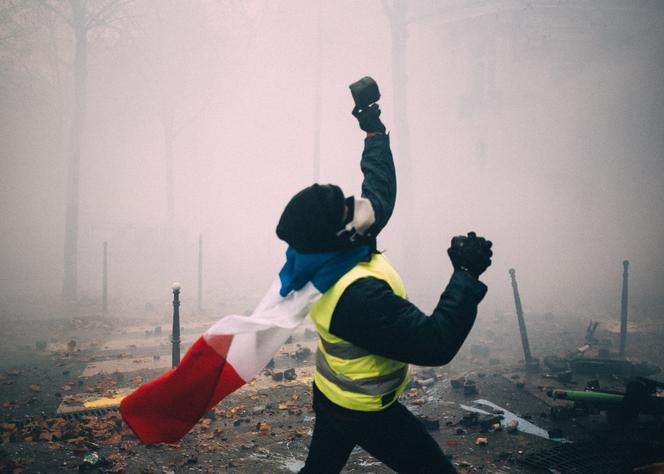


We're used to seeing photojournalism at the Visa pour l'Image festival in Perpignan rather than the Rencontres d'Arles. For this 54th edition, however, several exhibitions have appeared on the agenda to demonstrate the resilience and transformation of press photography. The majestic Abbaye de Montmajour is the temporary home of the newspaper Libération, on the occasion of its 50th anniversary. It's hard to summarize the history of this left-wing daily known for its unique, hard-hitting visual identity in a single room.
The exhibition, curated by Lionel Charrier, head of the newspaper's photo department, presents a chronological anthology of the best-published images – from Antanas Sutkus's pensive photo of Jean-Paul Sartre to Antoine d'Agata's hallucinatory vision of lockdown. On the wall, visitors will be able to see prints but not the printed pages, which is a pity, given the pioneering role played by the newspaper not only in the place given to photography, but also in the interplay between text and images.
Christian Caujolle, Libération's head of photography from 1981 to 1986, had demanded that his department be considered an editorial department, and not a mere illustration department – an exception at the time. "We ensured that all photo department employees got a press card, including iconographers, which was totally new," he explained. "Geographical location is always significant. We had to fight to get the photo department moved up to the editorial floor, as it had been relegated to the basement with production." This led to the creation of original and sometimes highly personal subjects, such as Raymond Depardon's melancholic correspondence from New York, and the enormous dossier compiled with Polish photographers at the time of General Jaruzelski's coup d'état in Poland in 1981.
The days when the press provided photographers with a steady income are long gone. This is evident in the exhibition presented by the MYOP agency, which has taken over Le Printemps for the entire summer, the former restaurant owned by the family of Jean-Paul Capitani (1944-2023), co-founder of Actes Sud publishing house. "The press is in our DNA," explained Antoine Kimmerlin, editorial director of the agency, founded in 2005 by photojournalists Lionel Charrier and Guillaume Binet and which today has 22 photographers on its books. "We always tell the real story, with our subjectivity," said Binet, "but, in the group, we have the whole range between photojournalists, documentary photographers and visual artists."
You have 47.75% of this article left to read. The rest is for subscribers only.
